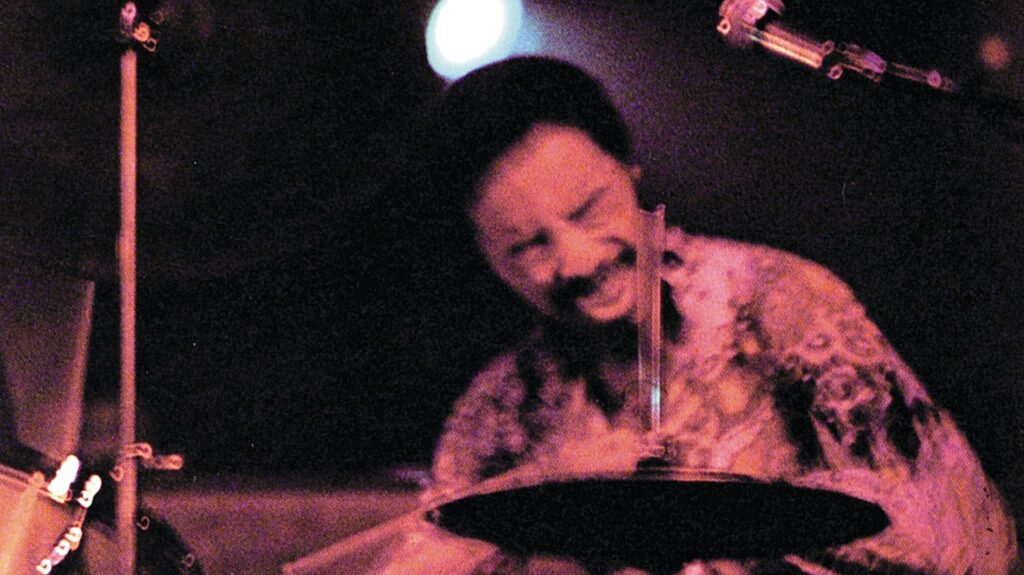
At the same time, he was brimming with fresh musical inspiration, drawn in part from voracious listening. In Herbie Hancock’s memoir, Possibilities, the pianist credits Williams as a constant source of new and challenging sounds during the ’60s, turning him on to radical composers including Karlheinz Stockhausen and John Cage. “I was always asking him, ‘What are you listening to?’ because I knew I’d learn something,” Hancock wrote.
While keeping up with the latest avant-garde developments, Williams also soaked in the pop music of the day. He’d grown up on doo-wop in the ’50s, even singing lead in a group called the Monticellos, and in the ’60s, to the dismay of some of his jazz peers, he became a proud Beatlemaniac, an enthusiasm that would endure for the rest of his life. As rock got progressively wilder, and louder, throughout the decade, the drummer was paying close attention. He would later characterize Turn It Over, the second Lifetime album, as “my version of Kick Out the Jams” by the MC5. For Emergency!, other rock luminaries like Cream, the Who, and the Jimi Hendrix Experience lit the spark.
In interviews conducted in the early Lifetime era, Williams spoke of amplified, overdriven rock as if it were a tractor beam, drawing him in. “I started hearing a lot of electricity,” he told Down Beat in 1970, citing Hendrix’s Are You Experienced as a touchstone, “…and that started to excite me, and I wanted to hear more of that.”
If Lifetime’s rock trappings were staunchly contemporary, the group’s basic makeup pointed backward roughly a decade, to Williams’ early days working alongside Johnny “Hammond” Smith. In that earlier era, the organ trio was seen as the pinnacle of swinging soulfulness, the instrument itself acting as a direct link between modern jazz and traditional gospel and blues. “I wanted an electric group, to have an organ trio which would go back to my roots in Boston, when I played in the late ’50s and early ’60s,” he later reflected. “I figured why not do that but make it more aggressive, more rock-oriented than blues-oriented? That was the premise. There’s nothing new, it’s just how you use it and how you put it together.”
The format may have been retro, but the personnel was state-of-the-art, with two virtuosos that Williams handpicked from very different backgrounds. In the early-to-mid-’60s, Newark-born Larry Young had progressed from soul jazz—sometimes working in the classic organ/guitar/drums format that Williams revived with Lifetime—to forward-looking post-bop. McLaughlin had spent the prior decade as a guitarist for hire on the London scene, playing jazz, blues, and R&B with future members of Cream and Led Zeppelin, among many others, while keeping close tabs on the innovations of Miles and John Coltrane. Hearing a tape of McLaughlin playing at London jazz mecca Ronnie Scott’s, Willliams appreciated that the guitarist was playing, as the drummer later said, in “a very aggressive way, not so politely,” and quickly called and invited him to New York.
